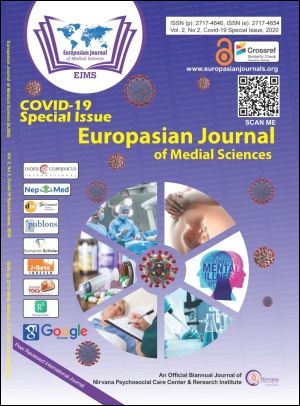Effects of COVID-19 during lockdown in Nepal
Keywords:
COVID-19 in Nepal, Effects of Lockdown, QuarentineAbstract
Nepal started its full lockdown on March 24, 2020 and has been extended until 14 June 2020 as a precaution for prevention of COVID-19 infection. However, the strict lockdown has been criticised by many as not all the deaths are caused by COVID-19. The long and strict lockdown have had some negative effects in many aspects of health of an individual in the community. Many women are facing barriers to access maternity health care during the lockdown period and there has been rise in the suicidal behaviour such as sucidal attempt and actual suicide itself among the general population. As the lockdown began in Nepal, all the school and colleges were suspended, and children were forced to spend their time indoors and exams has been postponed leaving the students stressed about the uncertainty of their future. Social distancing, isolation and quarantine at home can result in isolated in an abusive home where there could be even more increase in abuse during such crisis. Millions of babies are missing the routine vaccinations which is a threat to global achievement in immunization. Apart from the rise in negative impact on health of Nepali people, there are other impacts related to health such as serious impacts on logistics and supply management including shortage of medicine and food supply; and impacts on farming including both production and sale. Nepal took several precautionary measures as a response towards COVID-19 such as First, limiting international air travel, sealing the land border-crossings with India and introduction of social distancing measures. However, with rise in deaths due to non COVID related causes and negative impacts on economic and financial condition of the country, there is a need for the country to ease its lockdown. Contact tracing, making face mask mandatory along with social distancing measure can be an alternative to lockdown for Nepal while the country is preparing to ease its lockdown. Social distancing, hygiene, lifestyle factors and PPE measures need to continue for long term, whilst we need to keep working on the big public health issues such as poverty reduction, improving access to health service to achieve universal health coverage.
Downloads
Downloads
Published
How to Cite
Issue
Section
License
Copyright (c) 2020 Preeti Mahato

This work is licensed under a Creative Commons Attribution 4.0 International License.
The author(s) retain the ownership of the copyrights for their work published in EJMS without any restrictions. Upon submission, the author(s) grants EJMS a license to publish, including to display, store, copy, and reuse the published content.
License to Publish
By submitting a manuscript to EJMS, the author(s) grant the journal a non-exclusive license to:
- Publish and distribute the content in all formats, media, and platforms (both existing and future), while identifying EJMS as the original publisher.
- Reproduce, display, and store the content in both print and online formats, including institutional and digital repositories.
- Translate, adapt, and summarize the work, including reprints, extracts, and abstracts.
- Develop derivative works based on the original content.
- Include the work in electronic databases and provide links to third-party materials.
Creative Commons Licensing
In addition to EJMS’s publishing rights, authors grant third parties the right to use, share, and distribute their work under the Creative Commons Attribution 4.0 (CC BY 4.0) International License. This allows unrestricted use of the content, provided proper attribution is given to the original author(s) and the journal.

